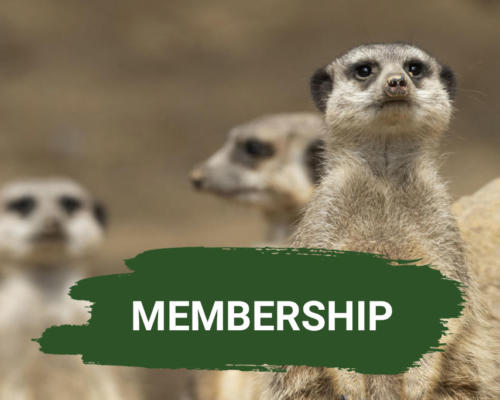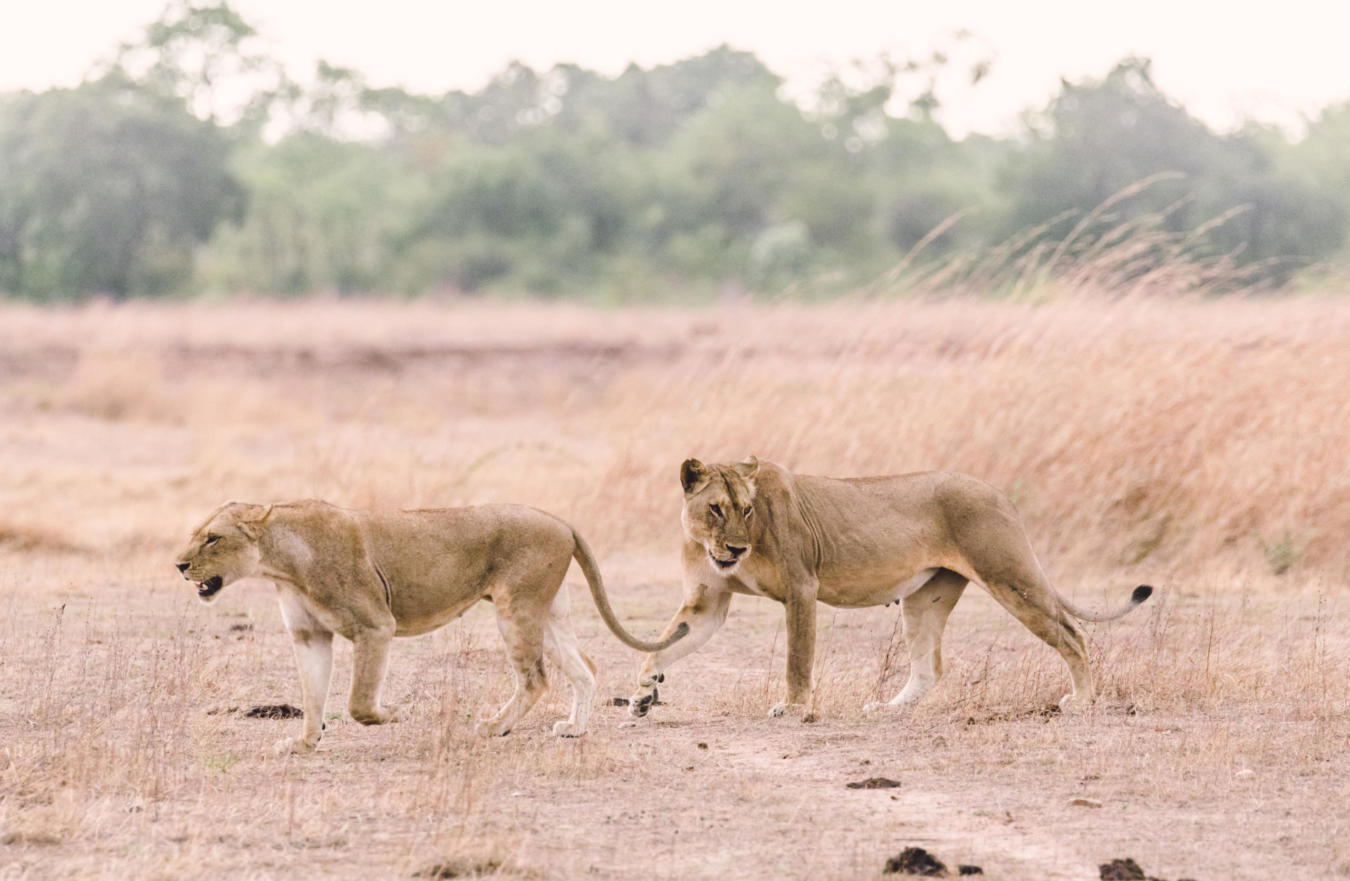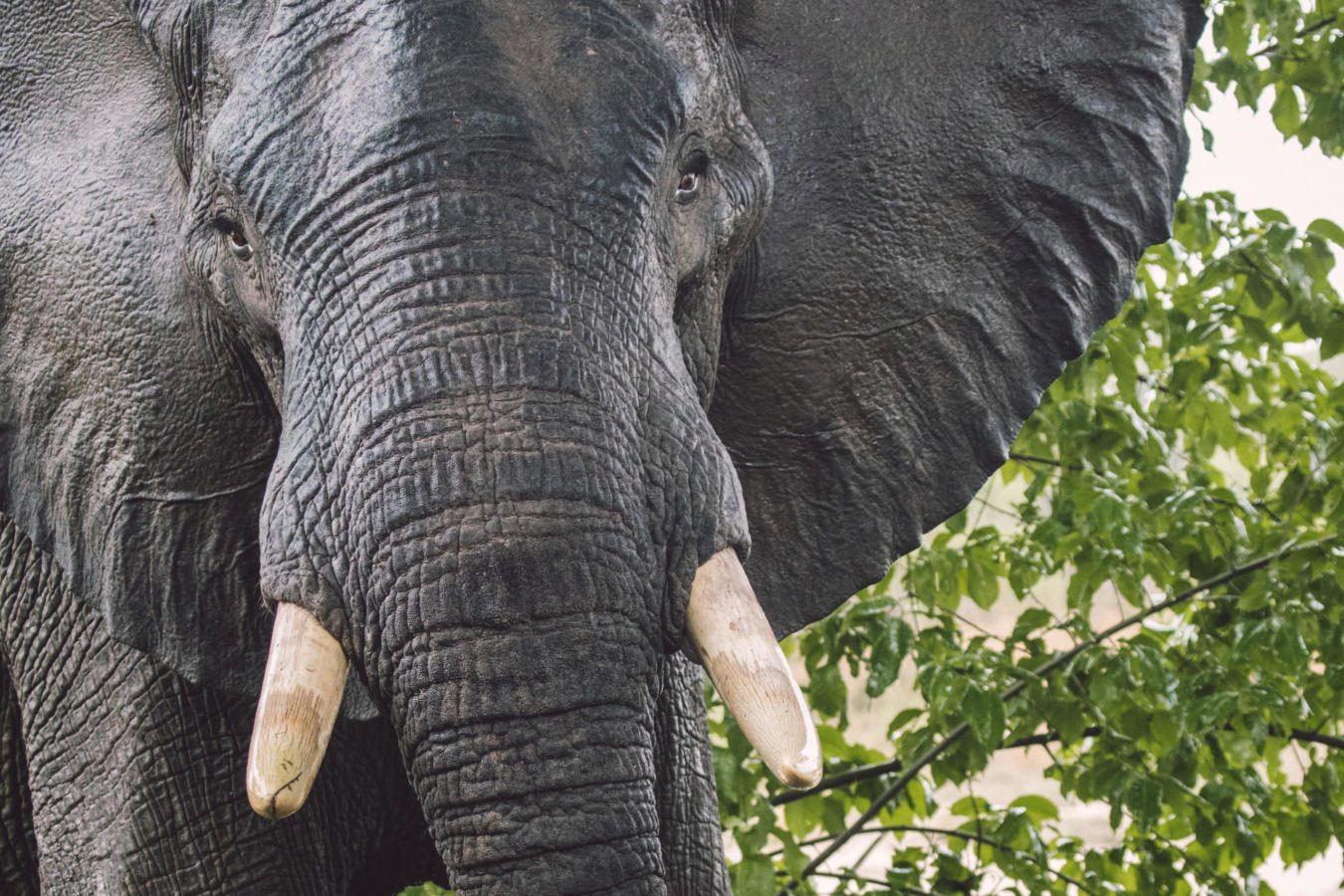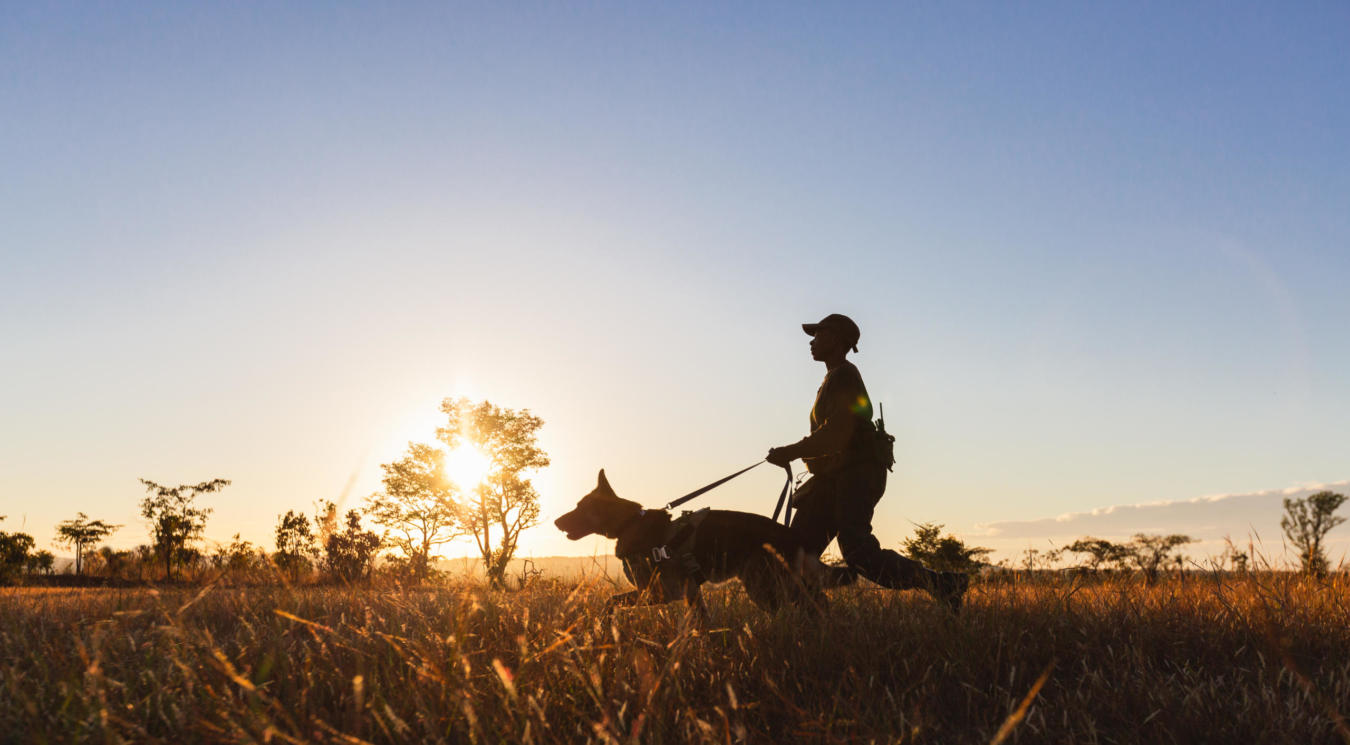NLCP and NTCP pick up all GMA Community Scout salaries during Covid when income from tourism fell to virtually zero. NTCP: An 8500-hectare sanctuary is completed inside Nsumbu National Park to provide an intensive management zone for wildlife translocations beginning in 2021 and ultimately aimed at securing a black rhino founder population.

Founded in 1986, the North Luangwa Conservation Program, based within and around North Luangwa National Park is one of FZS’s (and Zambia’s) longest standing projects; and the Nsumbu Tanganyika Conservation Program is one of its youngest, based around Nsumbu National Park and the wider southwestern Lake Tanganyika ecosystem. Both projects operate in partnership with Zambia’s Department of National Parks and Wildlife and work in close partnership with communities and government to ensure maximum effectiveness in protected area management at the two sites, which, when combined, cover over 29,000 km².
Engaging local communities is key to conserving these ecosystems and assisting them to sustainably manage natural resources to generate multiple benefits from living alongside wilderness areas. Both ecosystems are home to vast intact forests and crucial water catchment areas that contribute significantly to regional hydrological stability. The areas support a diverse range of flora and fauna, including, in North Luangwa, the endangered black rhino, strong populations of lions, and vulnerable but growing African wild dog populations. Nsumbu is home to the endangered and remarkable Sumbu-Itigi forests, a remnant and growing population of genetically distinct African savannah elephants, and offers vital protected breeding areas for Lake Tanganyika’s fish stocks which help to support over 10 million people.
- Reduce direct threats to species and ecosystems
- Ensure effective, transparent, and adaptive protected area management
- Work with communities that live alongside the Parks to ensure natural resources are sustainably managed and are generating multiple benefits to these same communities
- Improve policies, legislation, partnerships, and awareness contributing to both ecosystem and protected area management while ensuring both are sustainably financed
- Create an organizational framework that is effective, efficient, and consistently delivering project needs
- Negotiate partnerships for the improved and devolved co-management of Parks and Game Management Areas based on revenue retention
 12/13/2024News
12/13/2024NewsIn Memory of David Bonderman
12/13/2024NewsIn Memory of David Bonderman
David Bonderman (1942–2024), a visionary philanthropist and dedicated conservationist, has left an indelible mark on the world of wildlife conservation. As a significant supporter of the Frankfurt Zoological Society, his contributions have been instrumental in advancing conservation efforts globally.
 09/27/2024
09/27/2024The return of lions to Nsumbu National Park
09/27/2024The return of lions to Nsumbu National Park
An exciting wildlife recovery milestone has been reached in Nsumbu National Park, with three lions reintroduced after a near decade absence of the species in the ecosystem.
 08/20/2024News
08/20/2024NewsBuilding Pride: Fostering a lion-scape on the lakeshore
08/20/2024NewsBuilding Pride: Fostering a lion-scape on the lakeshore
Over a decade ago illegal hunting led to severe wildlife declines in Zambia’s Nsumbu National Park. Lions disappeared from the landscape, disrupting the ecological balance. Reintroducing lions is a critical part of restoring the ecosystem. Now, the Nsumbu Tanganyika Conservation Programme is working to return lions to Nsumbu National Park, … Read more


NTCP: The Tanganyika Boat Unit (TABU) is established to combat the illegal wildlife trade across southern Lake Tanganyika. NLCP sees the lowest ever detected poached elephant carcasses across the NL ecosystem.

Two rhinos with ex-Zambezi genes are added to the North Luangwa population. No elephants are poached inside NLNP.

FZS signs a Memorandum of Agreement with the Zambia Department of National Parks and Wildlife for Nsumbu National Park – the second FZS site in Zambia. The Nsumbu Tanganyika Conservation Project (NTCP) is formed.
Rhino sanctuary re-encirclement initiated and expanded to 1,200km; Rhino and Elephant Protection Unit (REPU) deployment base constructed; canine wildlife crime detection unit established; Aviat Husky surveillance aircraft purchased.
Rhino and Elephant Protection Unit (REPU) established; Conservation Education Program rebranded to Lolesha Luangwa “Look after Luangwa,” and a safari truck purchased for local school visits to NLNP.
North Luangwa Business Plan produced.
Anti-poaching vehicle fleet replaced with seven new Land Cruisers, Caterpillar Grader 140H, Rhino Yamaha Quad bikes, and five Honda motorbikes purchased through GIZ grant.
Founder population completed with the release of five more rhinos into NLNP; Black Rhino Management Plan completed.
Five more rhinos reintroduced to NLNP; FZS and ZAWA extend the partnership agreement to 2018.
Claire Lewis and Ed Sayer become project leaders.
Ten more rhinos reintroduced to NLNP.
First black rhino calf born in NLNP.
North Luangwa National Park General Management Plan completed.
The first five rhinos reintroduced from South Africa.
Rhino reintroduction project planning and vision created for NLNP.
Law enforcement database installed in NLNP.
Control and command center set up in NLNP.
The government of Zambia and FZS sign an agreement to jointly support NLCP until 2008.
FZS is invited to join the Program partnership, Elsabe Aucamp and Hugo van der Westhuizen become project leaders.
NLNP Program is taken over by Zambian authorities.
Major equipment purchase & delivery for NLNP; ivory trade is internationally banned.
FZS provides four vehicles and one aircraft to NLNP; Zambian authorities approve the building of the Research Centre.
FZS first provides support to North Luangwa National Park in Zambia.
First engagement of FZS with Zambia Wildlife Society for public environmental education.

























